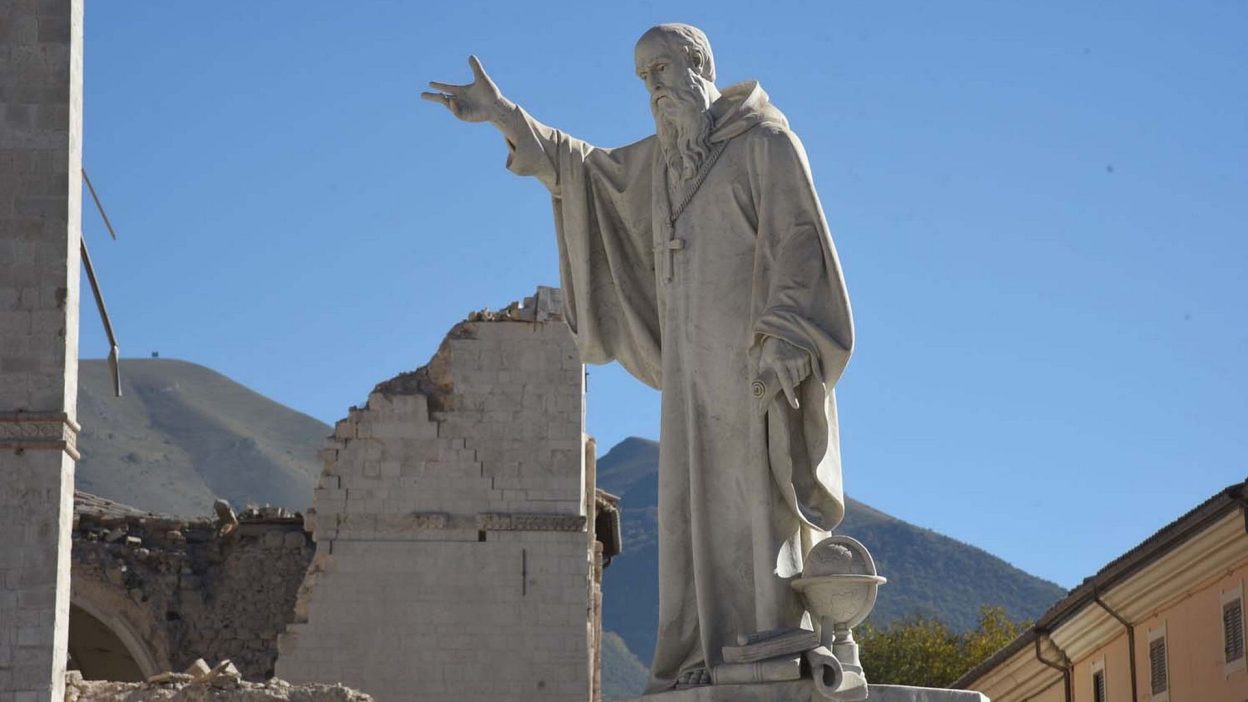A Cataclysm That Shattered The Zengid Dynasty
1. The Fateful Night: When Aleppo Shook to Its Core
In the annals of history, few disasters rival the sheer destruction brought by the 1138 Aleppo earthquake. The city, one of the grandest in the medieval Islamic world, was utterly devastated. This catastrophic event struck on 11 October 1138, unleashing unparalleled destruction upon Aleppo and its surrounding regions. The tremors, which originated in the tectonically active zone of the Middle East, led to widespread ruin, toppling fortresses, homes, and mosques in an instant.
The earthquake’s fury was not confined to Aleppo alone. Nearby towns and villages crumbled under its relentless force, as thousands were buried under the debris of once-magnificent structures. The tremors resonated through the fabric of the Zengid Dynasty, shaking its military strongholds and testing its governance during an already turbulent period.
2. The Zengid Dynasty: A Power Struggling Amidst Ruins
The Zengid Dynasty, a formidable force in the Islamic world, faced a severe blow as Aleppo—one of its crucial strongholds—fell into chaos. Established by Imad ad-Din Zengi, this dynasty had been expanding its influence across the Levant, challenging both Crusaders and neighbouring Muslim states. However, the earthquake forced its rulers to divert attention from military campaigns to the colossal task of rebuilding and maintaining order.
At a time when power was measured by the strength of a city’s defences, Aleppo’s catastrophic downfall threatened the Zengid hold on Syria. The destruction left its rulers vulnerable, weakening their ability to repel invasions and assert dominance over rival factions. The earthquake, in many ways, altered the course of the dynasty’s ambitions, as immediate survival took precedence over expansion.
3. The Human Cost: Death, Destruction, and Unimaginable Loss
- A Catastrophic Death Toll: The 1138 Aleppo earthquake ranks among the deadliest in recorded history, with estimates suggesting that over 230,000 people lost their lives. The sheer number of casualties places it among the most devastating earthquakes ever witnessed.
- Mass Injuries and Suffering: Tens of thousands sustained horrific injuries, with little medical aid available. The wounded lay trapped beneath rubble, with many succumbing to their wounds in the days that followed.
- Entire Families Wiped Out: Families perished together as entire neighbourhoods collapsed. The social fabric of Aleppo was torn apart, leaving orphans, widows, and a broken community struggling to survive.
- Architectural Ruin: Mosques, fortifications, and palaces crumbled, forever altering the city’s skyline. Historical records detail how Aleppo’s famed citadel suffered significant damage, weakening its once-imposing walls.
- Economic Devastation: Trade routes were disrupted, markets lay in ruins, and merchants faced insurmountable losses. The earthquake dealt a severe economic blow, from which Aleppo took decades to recover.
4. The Science Behind the Disaster: A Deadly Tectonic Shift
The Aleppo earthquake was triggered by the seismic activity of the Dead Sea Transform Fault, a major geological fault line running through the region. This tectonic boundary, responsible for numerous historical earthquakes, saw a sudden and violent release of energy in 1138.
The quake originated deep underground, with its epicentre located near Aleppo, causing shockwaves that radiated outward. The sheer intensity of the tremors suggests that the earthquake measured between 7.1 and 8.0 in magnitude, though precise figures remain speculative due to the lack of modern seismology.
Geologists believe that the high population density and unreinforced structures exacerbated the disaster, as medieval buildings were unable to withstand such force. This tragic event remains a stark reminder of the region’s ongoing seismic vulnerability.
5. The Immediate Aftermath: A City in Ruins and Despair
Survivors emerged from the debris to find a city unrecognisable. Streets were blocked by mountains of rubble, bodies lay unburied, and a thick cloud of dust hung over the ruins. The once-bustling markets stood silent, with traders and craftsmen among the countless dead.
Amid the chaos, desperate efforts were made to rescue those trapped beneath collapsed buildings. However, the primitive tools of the time made this a nearly impossible task. In many cases, survivors could only listen helplessly as the voices of loved ones faded beneath the wreckage.
6. Religious Interpretations: Divine Wrath or Natural Catastrophe?
In the medieval Islamic world, natural disasters were often viewed through a religious lens. Many interpreted the earthquake as a sign of divine wrath and punishment, believing that it was sent to cleanse the city of its sins. Clerics and religious scholars called for repentance, urging the people to seek forgiveness through prayer and acts of charity.
At the same time, others sought scientific explanations, referencing early Islamic scholars’ writings on earthquakes and their geological causes. This duality between faith and reason shaped how different groups processed the tragedy, influencing both personal and political responses.
7. The Political Consequences: A Kingdom Weakened
- Loss of Strategic Advantage: Aleppo’s destruction weakened the Zengid Dynasty’s ability to defend against external threats. The city’s fortifications, once formidable, were now in ruins.
- Rival Factions Seized the Opportunity: The chaos created a power vacuum, leading to conflicts between local rulers who sought to exploit the city’s weakened state.
- Crusader States Monitored the Aftermath: The Christian Crusader states, always on the lookout for Muslim vulnerabilities, observed the disaster with interest, though immediate attacks did not follow.
- Internal Struggles Intensified: The need for resources and manpower to rebuild Aleppo led to increased taxation and political instability within the Zengid realm.
- Economic Decline: Trade disruptions meant a decline in wealth and military funding, further limiting the dynasty’s expansionist ambitions.
8. Long-Term Effects on Aleppo and the Zengid Dynasty
The 1138 Aleppo earthquake had long-lasting consequences that extended far beyond the immediate devastation. The city of Aleppo, one of the most important cultural and economic hubs in the medieval Islamic world, suffered an immense setback in its development, infrastructure, and governance. Entire sections of the city were left in ruins, requiring decades of reconstruction. Many survivors migrated to other regions, leading to a decline in Aleppo’s population and a shift in its demographics.
For the Zengid Dynasty, the disaster disrupted their rule, weakening their hold over the region. While they managed to recover their military and political influence, the earthquake highlighted the vulnerability of their cities and exposed flaws in their urban planning and disaster preparedness. The natural calamity forced leaders to rethink fortification strategies and reconstruction policies, though Aleppo would remain prone to future seismic disasters. The dynasty’s weakened state also allowed rival factions to challenge their authority, leading to further political instability in the region.
9. Could This Disaster Have Been Prevented?
In the 12th century, there was little understanding of seismology, and scientific methods to predict earthquakes did not exist. However, historical patterns suggest that Aleppo had already been vulnerable to seismic events, meaning better urban planning and architectural reinforcements could have reduced the level of destruction. The use of stronger materials and earthquake-resistant building techniques—which were employed in some parts of the Islamic world at the time—might have saved thousands of lives.
Additionally, early warning systems, such as animal behaviour studies or pre-quake tremors, might have provided minimal forewarning, giving citizens a chance to escape. Unfortunately, without modern technology, these methods were unreliable. The real failure was in the lack of post-quake emergency response, as the affected areas struggled to recover due to limited resources and weak governance. Had leaders focused on better relief efforts, the long-term impact on the city could have been significantly reduced.
10. Lessons from the 1138 Aleppo Earthquake
This disaster serves as a grim reminder of the destructive power of earthquakes and the importance of preparedness. The 1138 Aleppo earthquake is often overshadowed by later, more well-documented disasters, yet it holds crucial lessons for modern societies. Even today, many cities sit atop seismic fault lines, and the tragedy of Aleppo highlights the urgent need for improved infrastructure, urban planning, and early warning systems.
Historical accounts of the earthquake also stress the need for government accountability in disaster response. The failure to properly rebuild and provide relief to survivors worsened the humanitarian crisis in Aleppo, demonstrating how political negligence can exacerbate a natural disaster’s effects. Today, with advancements in technology, seismologists and urban planners must learn from past catastrophes to mitigate the risks of future earthquakes.
FAQs
1. How strong was the 1138 Aleppo earthquake?
There is no exact magnitude recorded, but it is estimated to have been at least 8.5 on the Richter scale, making it one of the deadliest earthquakes in history.
2. How many people died in the 1138 Aleppo earthquake?
Historical sources estimate that around 230,000 people lost their lives, though exact numbers remain uncertain due to the lack of precise records.
3. Did the Zengid Dynasty recover from the disaster?
Yes, but with difficulty. The earthquake weakened their hold over Aleppo, and although they eventually reasserted control, the disaster left the city vulnerable to political and military challenges.
4. Could the destruction have been minimised?
Somewhat. If stronger building materials and earthquake-resistant designs had been used, the damage could have been less severe. However, seismology was not advanced in the 12th century.
5. Why is the 1138 Aleppo earthquake significant today?
It serves as a historical lesson on disaster preparedness, urban resilience, and governance failures, highlighting the importance of proactive planning in earthquake-prone areas.




